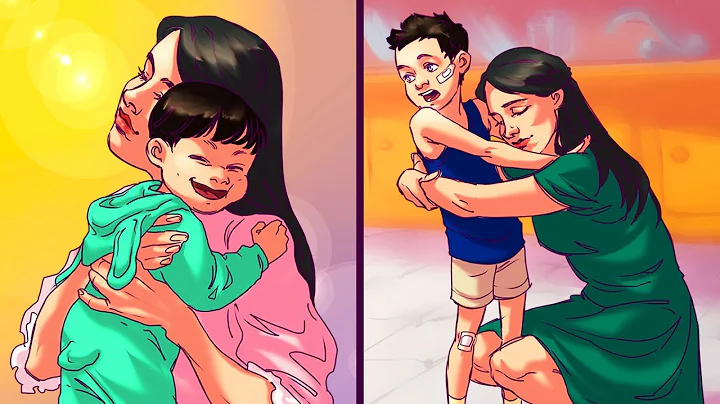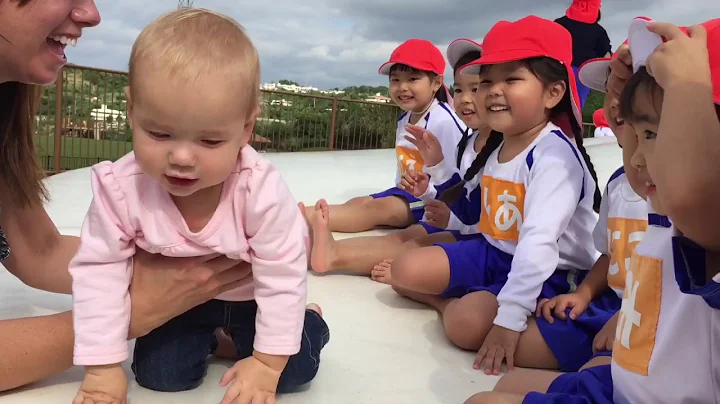All the people who pamper their children really want to have children. That's exactly what the Japanese are like. Like American parents, they want children first because they love children and it is a joy. But the Japanese want children not only for emotional satisfaction, but also because if they cut off their family lineage, they will become losers in life. This is not taken seriously in the United States. Every Japanese man must have a son. They want sons so that after they die, they will have someone to kneel down in front of the Buddhist altar, to extend the family line, to pass on the family lineage, and to maintain the family's honor and property. For traditional social reasons, fathers need sons as much as young children need their fathers. The son will always replace his father in the future, but this is not to abandon his father, but to make his father feel at ease. For several years, the father continued to manage the "household" and his son took over later. If a father cannot relinquish housework to his son, then his own role is meaningless. This deep-rooted sense of continuity makes adult sons feel less shameful and undignified about relying on their fathers than among Western nations, even if this situation lasts much longer than in the United States.
Women need sons not only for emotional satisfaction, but also because women only have status when they become mothers. The status of a childless wife in the family is the most unstable. Even if she does not get divorced, she cannot expect to be a mother-in-law one day and exercise power over her son's marriage and daughter-in-law. In order to continue the family line, her husband may adopt a child, but according to the Japanese concept, a childless wife is still a loser. Japanese women want to have more children. In the first half of the 1930s, the average birth rate was 31.7 per thousand, even higher than in Eastern European countries with many children. The birth rate in the United States in 1940 was 17.6 per thousand. Japanese mothers give birth to children very early, most of them when they are nineteen years old.
In Japan, childbirth is as secretive as sexual intercourse. Women should not moan loudly during labor pains to avoid letting others know. Mothers should prepare new bedding and cribs for their babies in advance, because it is unlucky for a newborn baby not to sleep in a new bed. Poor families who cannot afford a new bed have to wash quilt materials and cotton to make a "new" quilt. The small bedding is not as rigid as the adult's, and it is very light. It is said that dolls sleep better in their own beds. But deep down in their hearts, the basis for letting babies sleep in separate beds is still a kind of "induction witchcraft", that is, the new person must sleep in a "new" bed. Although the baby's bed is close to the mother's bed, the baby does not sleep with the mother until the baby grows up and knows how to ask to sleep with the mother. They say it may take a baby to reach its first birthday before it reaches out its hands and makes such a request. At that time, the baby was put to sleep in his mother's arms.
Babies are not breastfed for the first three days after birth because the Japanese wait for real milk to flow. Three days later, the baby will hold the nipple in his mouth at any time, either to feed or to play with. Mothers also enjoy breastfeeding their children. The Japanese believe that breastfeeding is one of the greatest physiological joys for women, and babies are also the easiest to feel this joy from their mothers. Breasts not only provide nutrition but also joy and pleasure. In the first month after birth, the baby is either placed in a crib to sleep or held by the mother. Thirty days later, I took the baby to visit a local shrine. Only after visiting the shrine can you think that the baby's life is rooted in the body, and you can take him out freely. After one month, the baby is carried on the mother's back, and a double strap is used to tie the child's armpits and hips, and then hang over the mother's shoulders and tie a knot in front of the waist. When the weather is cold, mothers wrap their children in coats. The older children in the family - both boys and girls - carry the baby on their backs, even when playing softball or kicking stones. Especially for farmers and poor families, most of them rely on their children to take care of their children. In this way, "because Japanese babies live among people, they quickly appear smart and interesting, and seem to be playing the same games as the older children who are carrying them on their backs." Japanese babies are stretched out and strapped to their backs in a manner similar to the shawl-wrapped style popular in the Pacific Islands and elsewhere. They all view children as passive. By raising babies in this way, they will be able to sleep anywhere, anytime and in any position when they grow up. That's exactly what the Japanese are like.However, carrying a baby in a strap in Japan does not completely cultivate passivity, as does using a shawl or a bundle to wrap the baby. The baby "will cling to others like a kitten on a person's back. ... The straps on the back are safe, but the baby ... will rely on his own efforts to find the most comfortable position; soon, he will be able to Master a skill of lying on your back and not just being a baggage strapped to someone else’s shoulders.”
The mother puts the baby on the bed when she is working and carries her baby on her back when walking down the street. The mother talks to the baby, hums songs to him, and asks him to perform various polite actions. When the mother returns a gift to others, she also shakes the baby's head and shoulders to make him bow. In short, babies are like adults. Every afternoon, the mother bathed the baby, then sat him on her lap and played with it.
Before three or four months, babies had to wear diapers, which were made of thick cloth. Japanese people often complained that their bow-legs were caused by diapers. After three or four months, the mother taught him how to defecate: estimate the time, take the baby outdoors, hold the baby's body with her hands, whistle in a monotonous bass, and wait for the child to defecate. Children can also understand the purpose of this auditory stimulation. It is recognized that Japanese babies, like Chinese babies, learn to defecate very early. Some mothers pinch their children's buttocks when their babies wet the bed, but usually they just scold them and take babies with poor memory outdoors more frequently to teach them to defecate. If you can't pass stool, clean your baby's bowel or give him laxatives. Mothers say this is to make their babies more comfortable. Once you learn how to use your toilet, you can stop wearing uncomfortable diapers. Japanese babies definitely find diapers uncomfortable, not only because they are thick and thick, but also because they do not have the habit of changing diapers immediately after they pee. However, babies are still too young to understand the connection between learning to relieve themselves and removing an uncomfortable diaper. They only experience what they have to do every day and cannot escape from it. Moreover, when mothers defecate their children, they should try to keep the baby's body as far away as possible and hold them tightly. This ruthless training prepares babies for adulthood to obey the most cumbersome compulsions in Japanese culture.
Japanese babies usually learn to talk first and then walk. Climbing is never encouraged. The traditional custom is that babies should not be allowed to stand or walk before they are one year old. In the past, mothers would never allow their babies to do that. In the past decade or so, the government has promoted the idea of encouraging babies to learn to walk in its cheap and popular "Mother's Magazine", which has gradually become popular. The mother ties a belt under the baby's armpits or supports the baby's body with her hands. However, babies still want to learn to talk early. When the baby starts to speak words, the words that adults use to make the baby talk and have fun gradually turn into purposeful teaching. Rather than letting babies learn speech from accidental imitation, they teach words, teach grammar, and teach honorifics, and both babies and adults enjoy doing this.
In Japanese families, children will do all kinds of mischief after they learn to walk. For example, piercing the window paper with your finger, falling into the stove in the middle of the floor, etc. When adults are dissatisfied with these, they exaggerate the dangers indoors, saying that stepping on the threshold is "dangerous" and strictly prohibit it. Of course, Japanese houses do not have basements; they are built on beams and columns above the ground. If a child steps on the threshold, the family will seriously think that the entire house will collapse and deform. Not only that, children cannot step, sit or lie on the joint between the two mats ( tatami ). The size of the mats is fixed, and the room is called a "three-mat room" or a "twelve-mat room" depending on the size. Children often hear this story: ancient warriors would stab people sitting and lying on the joints of the bunks to death with swords from under the bunks. Only thick, soft mats are safest, and the seams of mats are dangerous. Mothers often use "danger" and "no" to persuade their children, which contains this kind of emotion. The third common word of advice is "dirty." Japanese families are famous for their neatness, and children are taught to value neatness from an early age.
( ruth-benedict )






















